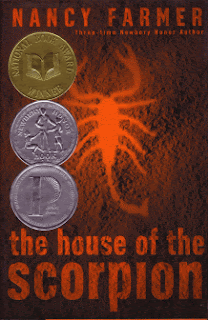The first novel I wrote revolved around Hindu mythology – specifically the stories of Ganesh, the elephant-headed god. I have a soft spot for traditional stories – myths of all types, legends, fairy tales, folk stories and the like.
And I’ll admit I’m a complete sucker for those History channel shows about topics like the Holy Grail or Lost Scrolls or the Shroud of Turin. (Ancient Aliens? Bigfoot? Giant Killer Catfish? Yep. I’ll get sucked into all of that stuff! Sounds so much like the stuff of myth to me.)
So when I heard of Sarwat Chadda’s books about the first female among the ranks of the Knights Templar, I couldn’t find a copy fast enough. Strong girl heroine. Ancient myths. Mysterious organizations with even more mysterious missions? Who could ask for more?
I was thrilled when Mr. Chadda agreed to answer some questions for me about his stories and his writing life. So please welcome Sarwat Chadda to Carpe Keyboard.
*********
Carpe Keyboard: Since I just finished reading Devil’s Kiss, I’m dying to know if the ending was planned. It is unexpected (at least it was to me!) and I love the twist in the prophecy. Now…I don’t want to give too many spoilers in this conversation – but could you tell us if you planned all along to end the book the way it was finally published? Did you plan out the whole plot, or do you work more organically?
Sarwat Chadda: There’s a big divide between writers who plot and those that let the story develop its own path. I’m very much the first group. I usually have a strong idea of how it’s going to end, then work towards it. I must admit, I usually have to rewrite it several times to make sure the story does flow logically, and I can appreciate this is the risk of being too rigid about where you want the story to go. On the other hand I have read a few books where it’s clear the writer has a strong initial concept but isn’t able to deliver the goods at the end. Then there’s the sense of frustration that the writer failed to deliver on the key promise of any story teller, a satisfying ending.
The end is incredibly important and I want to make sure I’ve saved the best till last.
I love it when writer’s pick names for their characters that just seem so….well…so right. How did Billi SanGreal get her name? And what about Kay? An unusual name for a boy, but somehow it fits with his physical description without seeming too feminine.
All the Templars are named after the Knights of the Round Table. I like the idea the Arthur doesn’t exist in Billi’s world but, in centuries in the future, her adventures will be the myths of her world.Billi’s name is different. I wanted to establish her Muslim heritage, her full name is Bilqis, and that name too has a lot of mythical resonance with the King Solomon legend (Bilqis was the name of the Queen of Sheba and her descendants were said to be the guardians of the Ark of the Covenant).
SanGreal is a name associated with the Holy Grail and the Templars and I wanted to give Billi a mythic quality. Again it’s a conceit, reminding us we’re in a world more ‘heightened’ than our own. It’s got to be painted bigger and more contrasting.
I’ve written before here on Carpe Keyboard about the distinct lack of parents in YA literature. If they aren’t physically out of the picture (dead mom, anyone?), then they are checked out somehow – not capable of having a relationship with the main character. Billi’s relationship with her father plays a huge role in how the plot moves along in Devil’s Kiss. Do you think readers relate somehow to parents being “checked out” or not fully involved in their lives? Why do you think this is such a pattern in literature and stories for young people?
I’m guilty of the dead mom but compensated that by adding a psycho father! The fundamental issue is what right-minded parent would allow their kid to go on death-defying adventures? So I made sure Billi’s dad isn’t right-minded at all. The dynamic between father and daughter isn’t much dealt with in kids’ fiction so I wanted to make sure it was central to mine.
That’s the same reason so many stories are sent in boarding schools, it’s all a way of keeping the grownups out of the picture. It was a challenge to take this new direction, of keeping the adults central to the story without sidelining Billi, but it was worth doing as it gave the story a fresh perspective
What research did you do into the Knights Templar and Christian tradition or mythology to write Billi’s story? I’d never heard of King Solomon’s mirror legend before… and I find it fascinating. (I happen to know a few myths and folk tales that revolve around mirrors…so I guess I’m particularly drawn to this one.)
The mirror story combines several legends. Solomon was master of magic and commanded the djinn and spirits through the power of a ring. But circles are a common motif in sorcery, so I translated that ‘ring’ to mean something circular, in my case a disk. Now the djinn and a form of supernatural creature, similar to angels and devils, and there’s a myth regarding the sorcerer Dr. Dee, who was said to have a scrying device that allowed him to communicate with angels.I then tied the two things together, the ‘ring’ of Solomon and Dee’s scrying device are one of the same.
And about those weapons…. Sheesh! Billi really is the bad ass warrior she’s advertised to be! Do you have swords and maces hanging around your house for inspiration? Or at least pictures of weapons Billi and the Knights use? (And if they’re hidden in your closet or hung on the walls of your basement…I don’t think I want to know!)
Yes, I have a number of swords from the Middle-East, Asia and Africa. All totally blunt I hasten to add! They’re on display in my weapons’ cabinet with a few other artifacts.
I wanted the stories to be as real as possible so, given that Billi is a weapons’ expert, that needed to be reflected in the book. She would know the specifics so would deal with the specifics. It’s one of the ‘tricks’ of writing and helps make the setting more believable if you can go into specific detail. It could be anything, a car, a street, a building or sound.
This also meant that when it came to book 2, Dark Goddess, I needed to make the setting as realistic as possible. Since the story was set in Russia that meant me going out there and exploring so I could write a ‘street-level’ viewpoint.
You followed Devil’s Kiss with Dark Goddess, another Billi SanGreal story. What can you tell us about your next project? Will we see more of Billi and the Knights Templar?
I’d love to write a Billi #3 but there are no hard and fast plans yet. The next series is part of the same world but introduces a new hero, Ash Mistry. The first book’s due out Fall 2012 from Arthur A. Levine and called ‘Ash Mistry and the Savage Fortress’. Few books have made any use of the amazing India myths or used India as a setting. That’s about to change. It’ll take bad-ass heroes to a whole new level.
That said, it is the same world as Billi and there are plans for her to be in this series too, but not as a central character.
When do you carpe your keyboard? What are your writing habits?
Drop the kids off at school. Try and write 2,000 words a day. Pick them up. Then a bit of paperwork and admin in the evening. Monday to Friday.
Finally, any advice for budding YA writers? (Not that I…ahem…know of any.)
There is only one: Keep writing. Set yourself a word count (500 a day, whatever) and DO IT. Write whether you feel like it or not. The more you practise the better you’ll get. I promise you.
Thanks so much, Mr. Chadda, for your time and for sharing your insights with us! I’m off to find a copy of Dark Goddess...and I’ll wait impatiently for your new stories involving Indian mythology. Good luck with sales! I wish you great success!
One last thing! Mr. Chadda has generously donated a copy of one of his books to Carpe Keyboard readers! If you’d like to be entered into a drawing to receive one of the Billi Sangreal books, leave me a comment below or post a link to this blog on your social network (and then tell me about it). I’ll draw the lucky winner on Monday, July 18, 2011.
(All Carpe Keyboard typical drawing rules apply. If the winner does not respond to me via email within one week of the drawing, I’ll put the book back in my stack for a different give away or I’ll draw another name from this lot.)



















